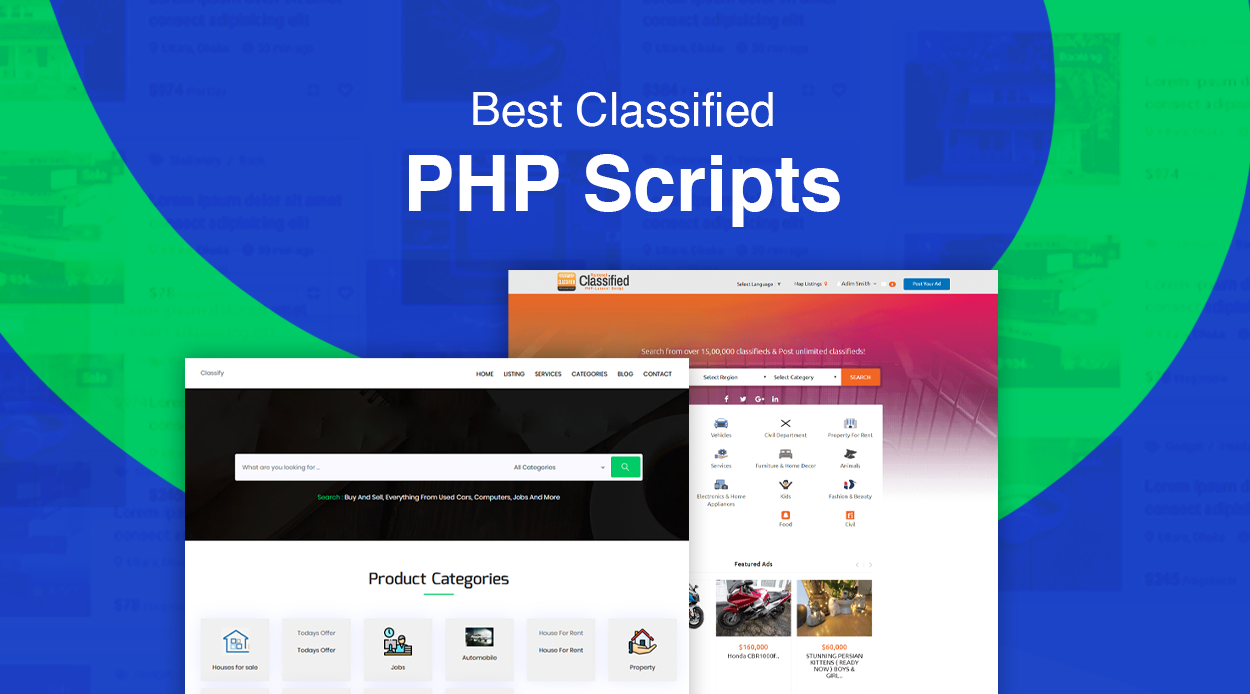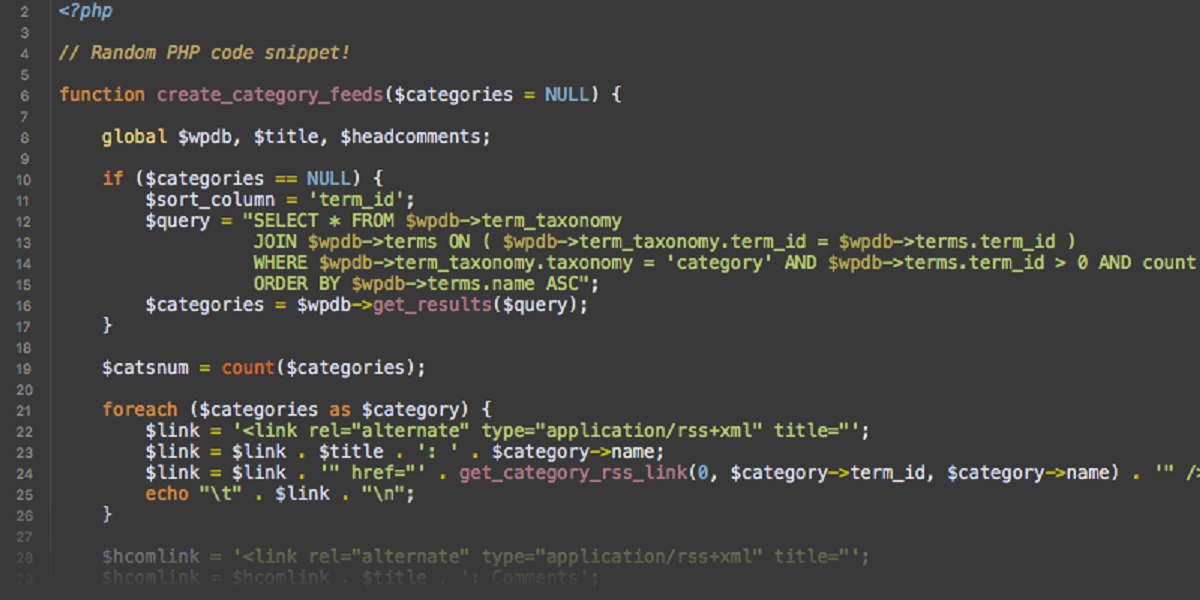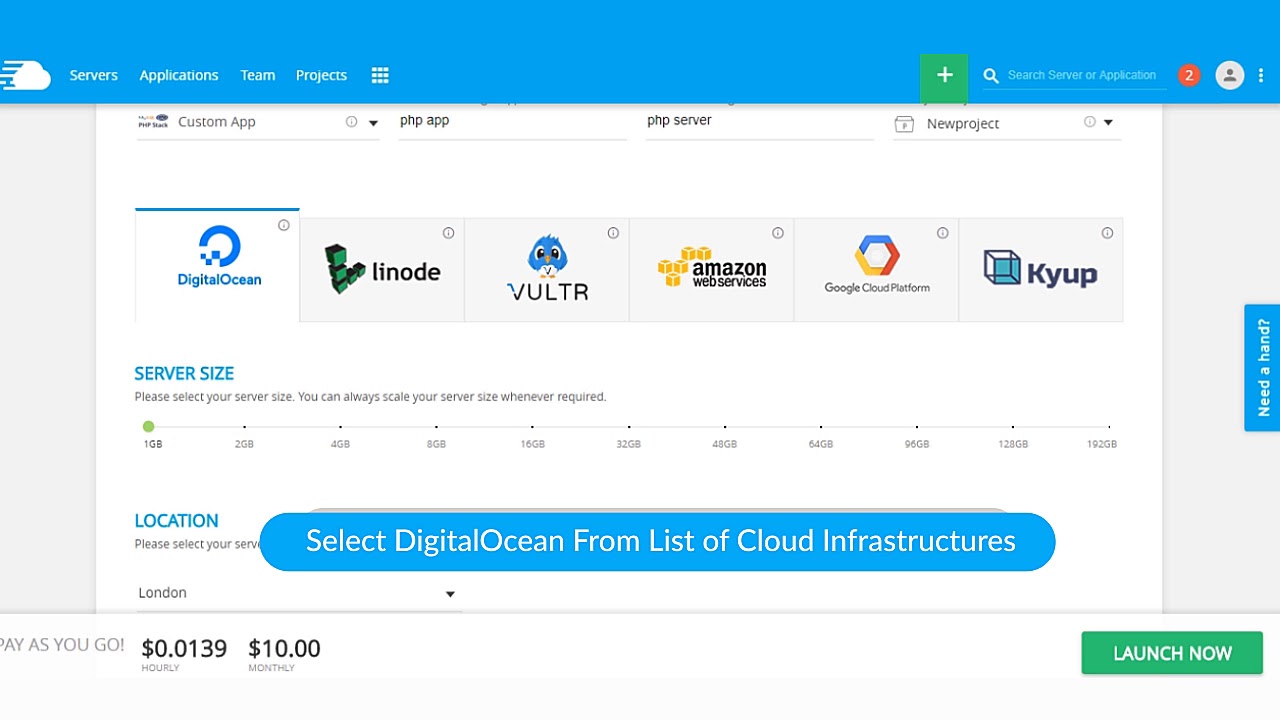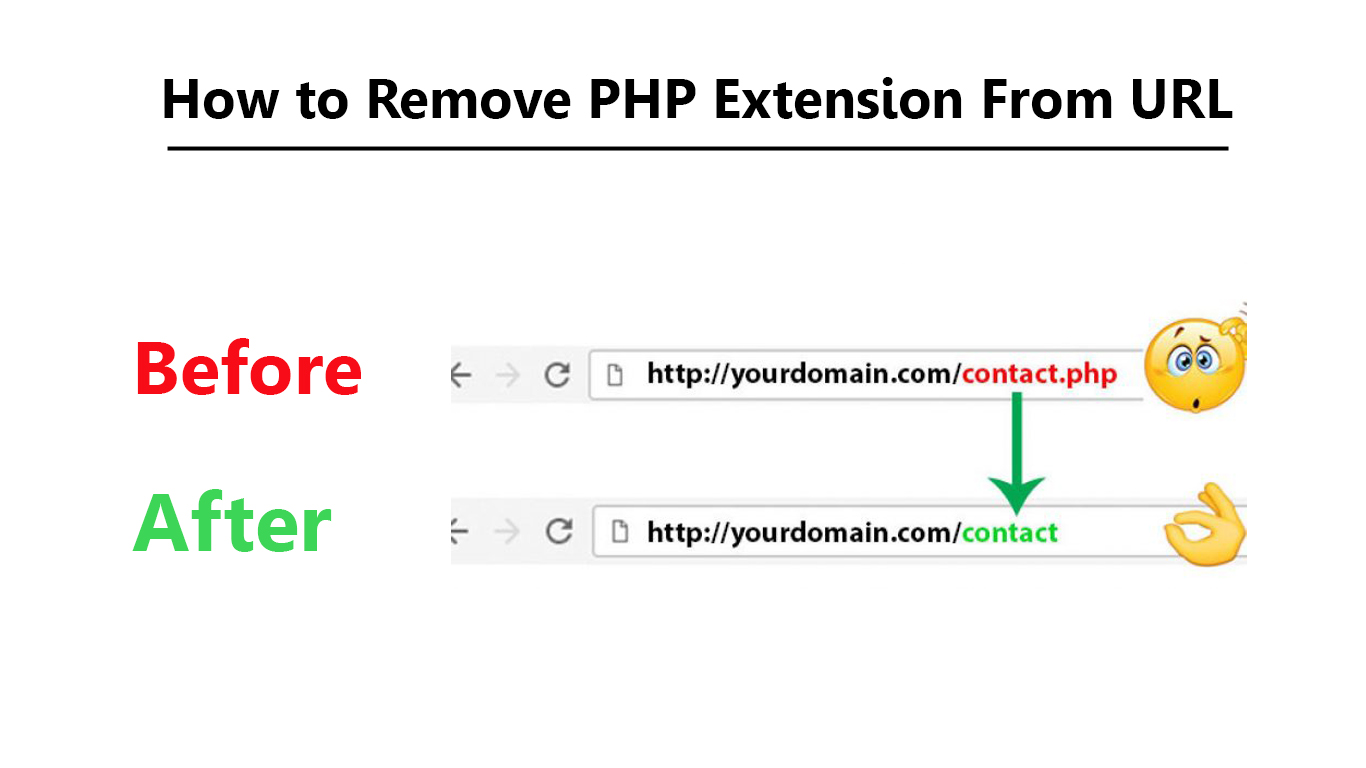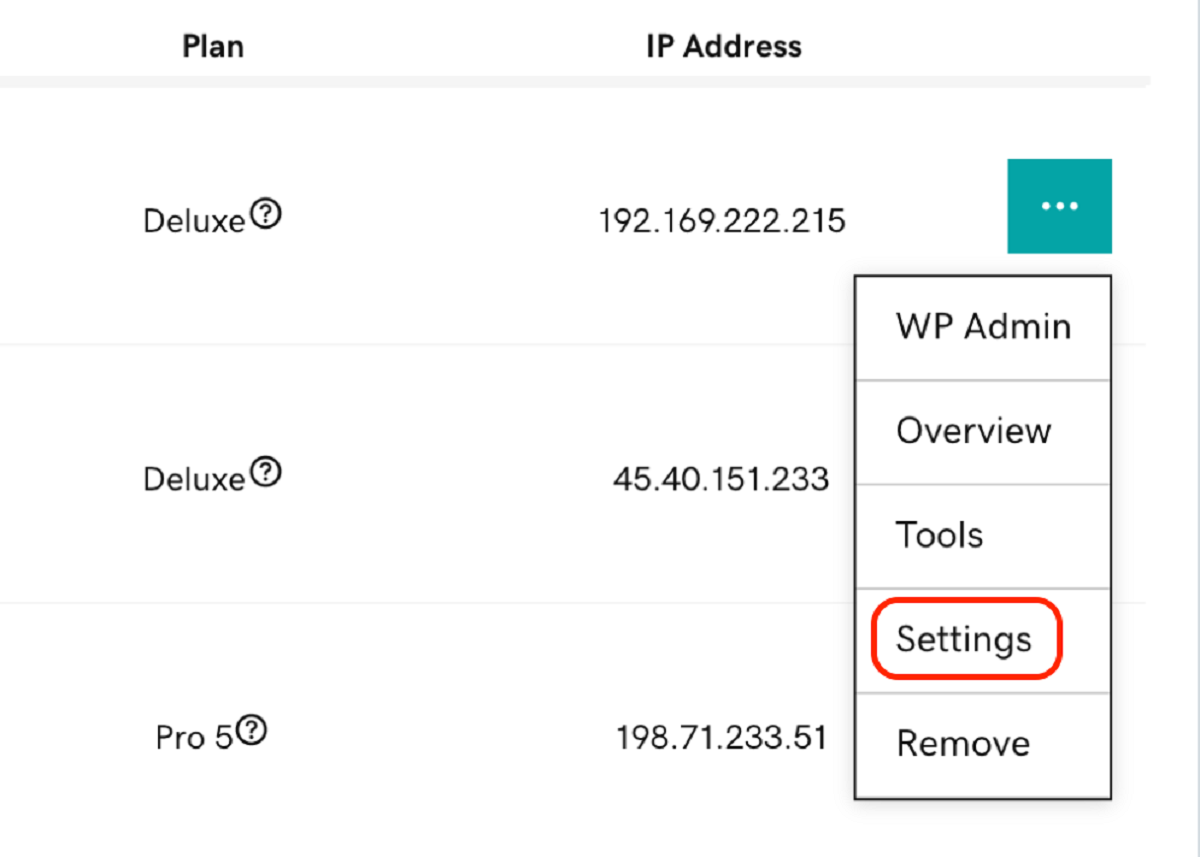Introduction
Welcome to our guide on how to create a classified website using PHP! Classified websites have gained immense popularity in recent years due to their ability to connect buyers and sellers in various industries. Whether you want to build a platform for selling and buying used items, offering services, or connecting job seekers with employers, a classified website can provide a convenient and efficient solution.
PHP, being one of the most widely-used server-side programming languages, offers a great platform for developing dynamic and feature-rich web applications. With its extensive library of frameworks and tools, PHP makes it easier for developers to build scalable and secure classified websites.
In this guide, we will walk you through the step-by-step process of creating your own classified website using PHP. We will cover everything from choosing a PHP framework to implementing various features such as user registration, search functionality, ad posting, user profiles, and even integrating payment gateways.
Whether you are a beginner looking to learn PHP or an experienced developer seeking to expand your skillset, this guide will provide you with valuable insights and practical examples that will help you create a successful classified website.
Throughout the guide, we will focus on building a user-friendly and visually appealing website. We will discuss best practices for designing the user interface, optimizing performance, and adding essential security features to ensure the safety of your users’ data.
By the end of this guide, you will have all the knowledge and tools necessary to build your own classified website using PHP. So let’s dive in and discover the exciting world of classified websites!
Choosing a PHP Framework
When it comes to building a classified website using PHP, selecting the right PHP framework is crucial. A framework provides a structured and organized approach to web development, offering various pre-built functionalities and libraries that can significantly speed up the development process.
There are several popular PHP frameworks available, each with its own strengths and weaknesses. Here are a few considerations to keep in mind when choosing a PHP framework for your classified website:
- Scalability: Ensure that the framework you choose can handle the potential growth of your website. Look for a framework that supports modular design and offers built-in scalability features.
- Documentation and Community Support: Check if the framework has comprehensive documentation and an active community. This will help you troubleshoot issues, find tutorials, and stay updated with the latest features and enhancements.
- Security: Security is of utmost importance for any website. Make sure the framework follows secure coding practices, provides built-in security measures, and has a history of prompt security updates.
- Performance: Look for a framework that emphasizes performance optimization and provides caching mechanisms for faster load times.
- Flexibility: Consider the flexibility of the framework in terms of customization and extensibility. You may need to add custom features or integrate third-party libraries.
Some popular PHP frameworks that are well-suited for building classified websites include Laravel, Symfony, CodeIgniter, and Yii. These frameworks have a robust set of features, excellent community support, and a large number of plugins and extensions to extend their functionality.
Take the time to evaluate the pros and cons of each framework and choose the one that aligns best with your project requirements and your level of expertise. It’s also a good idea to familiarize yourself with the framework’s architecture and development patterns to ensure a smooth development process.
Remember, the choice of a PHP framework will significantly impact the development speed, maintainability, and long-term success of your classified website. So choose wisely and embark on a development journey that ensures an efficient and reliable website for your users!
Setting Up the Project
Before diving into the development of your classified website, it’s essential to set up your project environment. Here are the steps to get started:
- Install a Local Development Server: Set up a local development server on your machine to emulate a real web server environment. You can use popular tools such as XAMPP, WAMP, or MAMP, depending on your operating system. These tools provide Apache, MySQL, and PHP, which are the core components needed for developing a PHP-based website.
- Choose a Text Editor or Integrated Development Environment (IDE): Select a text editor or IDE that you are comfortable with. Popular choices include Sublime Text, Visual Studio Code, PHPStorm, and Atom. These editors offer features like syntax highlighting, code auto-completion, and project management, which will enhance your development experience.
- Create a Project Directory: Create a new directory for your classified website project. This directory will contain all the project files, including PHP scripts, CSS stylesheets, JavaScript files, and any other necessary assets. Organizing your files in a systematic manner will make it easier to manage your project in the long run.
- Initialize a Version Control System: It’s a best practice to use a version control system like Git to track changes and collaborate with other developers. Initialize a Git repository in your project directory and commit your initial files. This will provide you with the ability to roll back changes, work on different branches, and maintain a record of your project’s history.
- Set Up a Database: Decide on the database management system you want to use for your classified website. Popular choices include MySQL, PostgreSQL, or SQLite. Install the necessary database software and create a new database specifically for your project. Ensure that the database server is running and accessible from your PHP development environment.
Once you have completed these steps, you will have a solid foundation for developing your classified website. With the local development server, text editor or IDE, project directory, version control system, and database set up, you are ready to start coding!
Remember to regularly commit your changes to the version control system to ensure a reliable and trackable development workflow. This will give you the flexibility to experiment with different features, revert to previous versions if needed, and collaborate smoothly with other developers if you are working in a team environment.
In the next sections, we will focus on the core functionalities of your classified website, such as user registration and login, search functionality, ad posting, user profiles, payment gateways, security features, and performance optimization. So let’s move forward and bring your classified website to life!
Creating a Database
Once you have set up your project environment, the next step in building your classified website is to create a database. The database will store all the information related to users, ads, categories, and other essential data.
Here are the steps to create a database for your classified website:
- Choose a Database Management System: Decide on the database management system (DBMS) you want to use. Common options for PHP-based websites include MySQL, PostgreSQL, and SQLite. Consider factors like performance, scalability, and your familiarity with the DBMS when making your choice.
- Set Up the Database Server: Install the chosen DBMS on your local development server or set it up on a remote server if you’re planning to deploy your website online. Configure the server to ensure it’s running correctly and accessible.
- Create a New Database: Using a tool like phpMyAdmin or the command line interface of your chosen DBMS, create a new database specifically for your classified website. Give it a meaningful name that reflects the purpose of your project.
- Design the Database Schema: Determine the different entities and relationships required for your website. For example, you might have tables for users, ads, categories, and comments. Define the columns and data types for each table, as well as any unique identifiers or foreign key relationships.
- Create the Database Tables: Use SQL statements to create the necessary tables in your database. Make sure to specify the appropriate data types, primary keys, foreign keys, and any necessary constraints. Utilize the power of the database engine to enforce data integrity and optimize performance.
- Populate the Database: If you have any initial data that needs to be inserted into the database, create SQL insert statements or use a tool like phpMyAdmin to add the necessary records. This can include default categories, test users, or any other data that will be required for the functionality of your website.
Once you have created and populated your database, you can now start connecting your PHP code to the database and performing CRUD (Create, Read, Update, Delete) operations to manage the data for your classified website.
Remember to implement proper database security measures, such as using prepared statements or parameterized queries to prevent SQL injection attacks. Regular backups of your database should also be taken to ensure data integrity and disaster recovery.
In the next sections, we will cover the design of the user interface, implementing user registration and login functionality, building the search feature, and much more.
Now that you have a solid foundation with a properly designed database, let’s move forward and bring your classified website to life!
Designing the User Interface
The user interface plays a critical role in the success of your classified website. It directly impacts the user experience and determines whether visitors will stay and engage with your website or quickly move on to another platform. When designing the user interface, it’s important to create a visually appealing and intuitive layout that enhances usability and encourages users to explore and interact with your website.
Here are some essential considerations to keep in mind when designing the user interface for your classified website:
- Define the Website Structure: Start by sketching out a rough wireframe of your website’s layout. Determine the hierarchy of pages and the flow of information. Consider which pages will be accessible from the main navigation and how users will navigate through your website.
- Optimize for Mobile Devices: With the increasing use of smartphones, it’s crucial to ensure that your website is mobile-friendly. Implement responsive design techniques to adapt your interface to different screen sizes and provide a seamless experience across devices.
- Focus on Clarity and Simplicity: Keep the design clean and easy to understand. Avoid cluttered layouts and excessive use of colors and fonts. Use whitespace effectively to create a sense of balance and highlight important elements.
- Use Clear and Consistent Navigation: Make sure users can easily find their way around your website. Use clear labels and intuitive icons for navigation links. Maintain consistency in the placement of navigation menus and buttons across pages.
- Showcase Visuals: Visuals play a crucial role in attracting users’ attention and conveying information. Use high-quality images, icons, and graphics to enhance the visual appeal of your website and make it more engaging.
- Implement a Search Bar: Design a prominent search bar that allows users to quickly find the specific ads or categories they are interested in. Consider providing advanced search filters to enhance the search experience.
- Use Clear Calls to Action (CTAs): Guide users towards their desired actions with clear and visually distinct CTAs. Whether it’s posting an ad, contacting a seller, or making a purchase, make sure the CTA buttons stand out and are easily identifiable.
- Ensure Readability: Pay attention to the readability of your content. Use legible fonts, appropriate font sizes, and sufficient contrast between the text and background. Break down content into sections and use headings, paragraphs, and bullet points to improve readability.
- Test and Iterate: Regularly test the user interface with real users and gather feedback. Analyze user behavior and make iterative improvements based on the insights you gain. Continuously strive to enhance the user experience and address any pain points.
Remember, the ultimate goal of the user interface is to create an intuitive and enjoyable experience for your users. By following best practices in design and usability, you can increase user engagement, maximize conversions, and make your classified website stand out from the competition.
In the next sections, we will delve into the implementation of user registration and login functionality, building the search feature, and other essential features for your classified website.
So roll up your sleeves, put your design skills to work, and let’s create a visually appealing and user-friendly interface for your classified website!
Implementing User Registration and Login
User registration and login functionality are fundamental features for a classified website. They allow users to create accounts, manage their profiles, and access personalized features. Implementing a secure and seamless registration and login process is vital to ensure the privacy and convenience of your users.
Here are the steps to implement user registration and login for your classified website:
- Create the User Registration Form: Design a form where users can enter their information to create an account. Include fields such as username, email address, password, and any additional details you want to collect. Validate user input to ensure data integrity and prevent common security threats like SQL injection and cross-site scripting.
- Implement User Registration Logic: When a user submits the registration form, validate the form inputs and check if the chosen username or email address is already registered. If the input is valid, create a new user record in the database, securely storing the password using techniques like hashing and salting.
- Create the Login Form: Design a login form that allows users to enter their credentials to access their accounts. The form should include fields for username or email and password.
- Implement User Login Logic: When a user submits the login form, validate the inputs and verify the credentials against the stored values in the database. If the credentials match, create a session for the user and redirect them to the desired page. Implement features like “Remember Me” to offer persistent login functionality.
- Manage User Sessions: Use sessions or tokens to track user sessions and maintain user authentication across different pages. Store necessary user information in the session variables for easy access as the user navigates the website.
- Implement User Profile Management: Allow users to update their profile information, change passwords, and manage any other relevant details. Design and implement user-friendly interfaces to facilitate these actions and ensure a smooth user experience.
- Provide Account Recovery Options: Account recovery options such as password reset and email verification are essential for user convenience. Implement features that allow users to recover their accounts in case they forget their passwords or need to verify their email addresses.
- Enhance Security Measures: Implement security measures such as CAPTCHA, brute-force protection, and account lockout mechanisms to protect user accounts from unauthorized access and malicious activities.
Ensure that your user registration and login functionality comply with best practices for data privacy and security. Implement measures like password encryption, SSL/TLS encryption for data transmission, and secure password recovery processes.
By implementing efficient and user-friendly registration and login features, you will provide a seamless experience for users and help foster trust and engagement on your classified website.
In the next sections, we will dive deeper into building the search functionality, developing the ads posting feature, and integrating user profiles to enhance the user experience on your classified website.
So, let’s continue building a robust and user-centric platform for your classified website!
Building the Search Functionality
The search functionality is a crucial component of any classified website as it allows users to quickly find the specific ads or categories they are interested in. Implementing a robust and efficient search feature will greatly enhance the user experience and increase the chances of successful user interactions on your website.
Here are the steps to building the search functionality for your classified website:
- Identify Searchable Data: Determine which data fields you want to make searchable, such as ad titles, descriptions, categories, location, or any other relevant information. Consider the unique aspects of your classified website and choose the fields that will provide the most meaningful search results for your users.
- Design the Search Interface: Create a user-friendly search interface that allows users to enter search queries and filter their results. Provide options for advanced search, including filtering by categories, location, price range, or any other attributes specific to your website.
- Implement a Search Algorithm: Develop a search algorithm that retrieves relevant results based on the user’s query. Consider using techniques like keyword matching, fuzzy matching, or weighted relevance scoring to improve the accuracy of the search results.
- Optimize Query Performance: Implement techniques such as indexing, caching, or query optimization to enhance the performance of the search functionality. Ensure that search queries are executed efficiently and deliver fast results, even when dealing with a large volume of data.
- Display Search Results: Organize and present the search results in a clear and concise manner. Use pagination or infinite scrolling to handle large result sets and provide a smooth browsing experience for users.
- Implement Sorting and Filtering: Allow users to sort the search results based on factors like relevance, date, price, or any other relevant criteria. Enable filters to refine the search results based on specific attributes or categories.
- Highlight Keywords: Enhance the user experience by highlighting the searched keywords within the search results. This provides users with a quick visual confirmation that their query matches the ad or category they are looking for.
- Track Search Analytics: Implement tracking mechanisms to gather analytics data on search queries. This information can help you understand user behavior, improve the search relevance, and gain insights into popular search terms.
By building a robust and user-centric search functionality, you will empower users to quickly find what they are looking for on your classified website. It will enhance user satisfaction, encourage prolonged engagement, and ultimately drive conversions and user interactions.
In the next sections, we will explore how to develop the ads posting feature, implement user profiles, integrate payment gateways, and add essential security features to strengthen your classified website.
So let’s continue our journey towards creating a comprehensive and successful classified website!
Developing the Ads Posting Feature
The ads posting feature is a core component of a classified website, allowing users to create and manage their listings. Implementing a robust and user-friendly ad posting feature is crucial to the success of your website and the overall user experience.
Here are the steps to developing the ads posting feature for your classified website:
- Create the Ad Posting Form: Design a form that allows users to enter the details of their ad, such as the title, description, category, price, contact information, and any other relevant fields. Include validation to ensure that users provide the necessary information.
- Implement Image Upload: Enable users to upload images for their ad. Implement features like image resizing and compression to optimize the display of images and ensure faster page load times.
- Implement Security Measures: Validate user inputs, sanitize data, and implement techniques like CAPTCHA to prevent spam submissions and protect against malicious activities.
- Store Ad Data: Save the ad data in the database. Create a new record for each ad, store the details entered by the user, and associate the ad with the user’s account for easy management and retrieval.
- Implement Ad Management: Develop features that allow users to manage their ads, including editing, deleting, and renewing listings. Design intuitive interfaces that make it easy for users to update their ad information when needed.
- Enable Ad Search and Display: Integrate the newly posted ads into the search functionality of your website. Ensure that users can find newly posted ads in search results and have a seamless experience browsing through available listings.
- Implement Ad Promotions and Featured Listings: If desired, provide options for users to promote their ads or feature them in prominent sections for maximum visibility. Develop features that allow users to boost the visibility of their listings in exchange for a fee.
- Implement Reporting and Moderation: Enable users to report inappropriate or misleading ads and implement a moderation system to review reported ads. Develop mechanisms to handle user complaints, remove problematic listings, and maintain the quality and integrity of your website.
By implementing a comprehensive and user-friendly ad posting feature, you empower users to showcase their products or services effectively. This feature not only enhances the user experience but also encourages higher engagement and conversions on your classified website.
In the next sections, we will cover the implementation of user profiles, integration of payment gateways, the addition of essential security features, optimizing performance, and more.
So let’s continue our journey towards building a successful and feature-rich classified website!
Implementing User Profiles
User profiles are an integral part of a classified website as they allow users to manage their personal information, track their activities, and establish credibility within the community. Implementing user profiles provides a personalized experience for users and enhances the overall functionality and engagement on your website.
Here are the steps to implementing user profiles for your classified website:
- Design User Profile Layout: Create a visually appealing design for the user profile page. Include sections to display the user’s profile picture, contact information, bio, and any other relevant details that users can share.
- Allow Profile Customization: Implement features that enable users to customize their profiles, such as uploading a profile picture, choosing a background image, or adding a personal description.
- Implement User Activity Tracking: Develop mechanisms to track and display user activity, such as the number of ads posted, number of views, and comments made. This helps establish user credibility and encourages active participation within the community.
- Integrate User Rating and Feedback: Implement a rating and feedback system that allows users to rate each other’s transactions or interactions. This feature helps build trust within the community and allows users to make informed decisions when engaging with other users.
- Enable Social Sharing: Integrate social sharing functionality to allow users to share their listings or favorite ads on social media platforms. This increases visibility and can attract more users to your website.
- Implement Privacy Settings: Provide users with the ability to control the visibility of their profile and personal information. Implement privacy settings that allow users to choose who can view their profile and contact information.
- Enable Communication Channels: Implement messaging or chat features that allow users to communicate with each other directly. This facilitates smooth communication and negotiation between buyers and sellers.
- Implement User Verification: Implement a user verification system to enhance trust and security. This can involve email verification, phone number verification, or even ID verification for certain types of classifieds.
By implementing comprehensive user profiles, you enable users to establish their online presence, personalize their experience, and build trust within your classified website community. User profiles not only enhance user engagement but also facilitate better interaction and collaboration between users.
In the next sections, we will cover the integration of payment gateways, the addition of essential security features, optimization of performance, and other crucial components of a successful classified website.
So let’s continue our journey towards creating a dynamic and user-centric classified website!
Integrating Payment Gateways
Integrating payment gateways into your classified website is essential for facilitating secure online transactions and enabling users to buy and sell products or services with ease. By offering a variety of payment options, you enhance the user experience and create a seamless platform for conducting financial transactions.
Here are the steps to integrating payment gateways into your classified website:
- Select a Payment Gateway Provider: Choose a reliable and secure payment gateway provider that supports the currencies and countries relevant to your website’s target audience. Popular options include PayPal, Stripe, Braintree, and Authorize.net.
- Create a Merchant Account: Sign up for a merchant account with the selected payment gateway provider. This account will allow you to receive payments from users and manage your financial transactions.
- Obtain API Credentials: Once you have a merchant account, obtain the necessary API credentials (such as API keys, tokens, and secrets) from the payment gateway provider. These credentials will be used to integrate the payment gateway into your website.
- Implement Payment Processing: Develop the necessary code and logic to handle payment processing. Implement features that calculate the total amount to be charged based on listing prices, any additional fees, and applicable taxes. Handle currency conversions if your website supports multiple currencies.
- Develop a Secure Checkout Process: Design and implement a secure and user-friendly checkout process. Ensure that user payment details are encrypted and securely transmitted to the payment gateway provider.
- Handle Payment Confirmation: Implement a mechanism to handle payment confirmation and capture. Update the status of the transaction in your database and notify user and seller about the transaction details.
- Handle Refunds and Disputes: Implement features to handle refund requests, disputes, and chargebacks. Communicate with the payment gateway provider’s API to initiate the refund process and maintain proper records of transactions.
- Test and Debug: Thoroughly test the payment gateway integration in a controlled environment to ensure that payments are processed correctly and securely. Debug any issues that may arise during the testing phase.
- Maintain PCI Compliance: Payment Card Industry Data Security Standard (PCI DSS) compliance is crucial for handling and transmitting sensitive user payment information securely. Ensure that your website meets the necessary security requirements set by the payment gateway provider and maintain regular security audits.
By effectively integrating payment gateways into your classified website, you provide users with a seamless and secure payment experience. This not only instills trust but also encourages users to engage in transactions, thereby boosting the success of your website.
In the next sections, we will cover the implementation of essential security features, optimization of performance, and other crucial aspects necessary for a reliable and efficient classified website.
So let’s move forward and create a classified website that meets the needs of users and ensures a secure and convenient online experience!
Adding Security Features
Ensuring the security of your classified website is of utmost importance to protect user data, prevent unauthorized access, and maintain user trust. By adding robust security features, you can create a safe environment for users to engage, transact, and interact with confidence on your website.
Here are some essential security features to consider for your classified website:
- Implement Secure Authentication: Use secure hashing algorithms and salted passwords to store and authenticate user credentials. Avoid storing plain-text passwords or weakly hashed passwords that are vulnerable to attacks.
- Prevent Cross-Site Scripting (XSS) Attacks: Implement output escaping and input validation techniques to prevent cross-site scripting attacks. Sanitize user input before displaying it on web pages to prevent the execution of malicious scripts.
- Protect Against SQL Injection: Use prepared statements or parameterized queries to mitigate the risk of SQL injection attacks. Do not concatenate user input directly into SQL queries; instead, bind input values to placeholders.
- Implement Cross-Site Request Forgery (CSRF) Protection: Include CSRF tokens in forms and verify them during form submissions to prevent unauthorized requests originating from other websites.
- Secure Data Transmission: Use SSL/TLS encryption to secure data transmission between the user’s browser and your website. This protects sensitive information, including user credentials, payment details, and personal data, from eavesdropping and interception.
- Implement Rate Limiting: Apply rate limiting mechanisms to prevent brute-force attacks and protect user accounts from being compromised. Limit the number of failed login attempts and temporarily lock suspicious accounts after multiple unsuccessful login attempts.
- Implement CAPTCHA: Add CAPTCHA verification to forms, especially those with public submissions, to prevent automated bots from spamming your website or creating fake accounts.
- Maintain Regular Security Updates: Keep your website software, including frameworks, plugins, and libraries, up to date. Regularly patch any security vulnerabilities and apply security updates promptly.
- Perform Security Audits: Conduct regular security audits to identify any vulnerabilities or weaknesses in your website’s security. Implement measures to address and fix any identified issues promptly.
- Secure File Uploads: Validate and sanitize file uploads to prevent malicious files from being uploaded to your server. Use secure file storage techniques and restrict file access based on user permissions.
By actively implementing these security features, you can minimize the risk of security breaches and ensure the protection of user information on your classified website. A secure website not only fosters trust among users but also safeguards your reputation as a reliable and responsible platform.
In the next sections, we will cover the optimization of your website’s performance, important considerations for search engine optimization (SEO), and other crucial aspects of building a successful classified website.
Let’s continue our journey towards creating a powerful and secure classified website!
Optimizing Performance
Optimizing the performance of your classified website is crucial for providing a fast and seamless user experience. Slow loading times and sluggish performance can frustrate users and negatively impact their perception of your website. By implementing performance optimization techniques, you can ensure that your website runs efficiently and delivers content to users quickly.
Here are some essential steps to optimize the performance of your classified website:
- Optimize Front-End Code: Minify and compress CSS and JavaScript files to reduce their file sizes and improve loading times. Remove unnecessary code, consolidate files, and leverage browser caching to improve page load speed.
- Optimize Images: Compress images without compromising quality. Use image optimization tools and formats like JPEG or WebP to reduce file sizes and improve loading times.
- Implement Caching Mechanisms: Utilize browser caching and server-side caching techniques to reduce server load and improve response times. Cache static resources like CSS, JavaScript, and images to enable faster subsequent page loads.
- Enable Content Delivery Network (CDN): Utilize a CDN to distribute your website’s static assets across multiple servers. This improves global availability and reduces latency by serving content from the server that is geographically closest to the user.
- Optimize Database Queries: Analyze and optimize your database queries to improve query execution times. Index commonly queried columns, avoid unnecessary joins or nested queries, and utilize database caching where appropriate.
- Reduce Server Response Time: Optimize server configurations, such as web server software and PHP settings, to ensure fast response times. Consider using caching mechanisms like opcode caching or server-level caching to minimize server processing time.
- Implement Lazy Loading: Implement lazy loading for images, videos, or other content that may slow down initial page loading. Load content as it becomes visible to the user, reducing the initial page load time.
- Optimize Mobile Responsiveness: Ensure that your website is fully responsive and optimized for mobile devices. Mobile optimization improves performance on smaller screens and provides a smooth user experience across all devices.
- Regularly Monitor and Analyze Performance: Continuously monitor and analyze your website’s performance using tools like Google PageSpeed Insights or GTmetrix. Identify bottlenecks or areas for improvement and make necessary optimizations based on user behavior and performance metrics.
- Update Software and Plugins: Keep your website’s CMS, frameworks, plugins, and libraries up to date. Update to the latest versions to take advantage of performance enhancements and bug fixes.
By implementing these performance optimization techniques, you can create a fast and efficient classified website that provides an excellent user experience. Optimized performance not only enhances user satisfaction but also improves search engine rankings and increases user engagement.
In the next sections, we will cover important considerations for search engine optimization (SEO), marketing strategies, and other crucial aspects necessary for a successful classified website.
So let’s continue our journey towards creating a high-performing and impactful classified website!
Conclusion
Congratulations on completing this guide on how to create a classified website using PHP! Throughout this journey, we have covered various aspects of building a successful and feature-rich platform.
We started by exploring the importance of choosing the right PHP framework and setting up the project environment. Then, we delved into creating a database and designing a user-friendly interface that enhances usability and engagement on your website.
We implemented vital features such as user registration and login, search functionality, ad posting, user profiles, payment gateways, and security measures to ensure the privacy and safety of users. By optimizing performance, we created a fast and seamless user experience.
Remember, building a successful classified website requires a balance between functionality, aesthetics, and user experience. By implementing best practices, staying updated with the latest technologies, and continuously refining your website, you can create a platform that stands out among the competition and attracts a loyal user base.
As you move forward with your classified website project, keep in mind the importance of user feedback and analytics. Regularly gather user insights, analyze user behavior, and make iterative improvements based on the data you collect. This iterative approach will ensure that your website remains relevant and aligned with the evolving needs and expectations of your users.
Lastly, don’t forget to stay informed about the advancements in web development, security practices, and SEO techniques. By keeping up with the latest trends and industry practices, you can future-proof your website and adapt to changing technologies and user demands.
Now that we have reached the end of this guide, it’s time to apply the knowledge you have gained and start building your own classified website using PHP. Embrace creativity, problem-solving, and continuous learning as you embark on this exciting journey. Remember, building a successful classified website takes time, dedication, and a user-centric approach.
Wishing you all the best in creating a robust, secure, and thriving classified website that connects users and provides value to your target audience!







